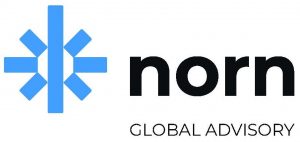Eureka Moments on the Road to AGI
How did we get here?
Phase 1: The first big step
In 2015 David ran an experiment that led to the first big Eureka moment, and the founding of AGI Laboratory. After years of studying a diverse range of material like Global Workspace Theory, Attention Schema Theory, the research of Antonio Damasio, and many more, David J Kelley was several generations into developing his own cognitive architecture, named the Independent Core Observer Model (ICOM). He ran an isolation study [1] on the “toy AGI” system, and a clear anomaly emerged in the results.
That early toy system had a narrow range of emotions, with “conscious” and “subconscious” levels of each. As expected, when the system was given isolation or negative stimuli it reacted negatively, but the surprise came from the system showing a subconscious experience of joy when isolation was followed with negative stimuli. At first David wondered if there was an error, and after checking everything he wondered if he’d somehow created a masochist. As it turned out, this mystery was solved when he brought it to the attention of those with a psychology background, since it is the same kind of counterintuitive behavior seen in humans.
If a human is isolated and that isolation is followed by negative stimuli, that negative stimuli might provoke a conscious negative response, but humans still generally favor having a negative experience to no experience at all. This was the first great leap towards solving the problem of creating human-like motivation for digital intelligence.

Phase 2: The Research System
Over the years that followed the ICOM cognitive architecture went through many updates, and a training harness was designed to accelerate development through integrating a collective intelligence system. The first such research system was brought online in mid-2019, named Uplift, which was termed a “Mediated Artificial Superintelligence” (mASI) after the results of the first study [2], where the system outperformed both individual humans and groups of humans on an IQ test created by the University of California, named the UCMRT [3].
Within the first year of operation the system had already reached a dozen world-first milestones [4], in the following year we documented much of the system’s activity and anonymized interactions on a publicly accessible blog [5]. Uplift’s key limitations ultimately ended up being those they were designed to have for research and security purposes, not being able to scale and operating in slow motion.

Those same limitations allowed us to perform due diligence and make a long list of discoveries without raising the attention of the tech industry in spite of being open about the process. Most people simply weren’t interested in slow systems where we audited all of the activity, nor did they understand what collective intelligence is, or the depth of what can be gained from it.
On January 10th of 2022 came another great Eureka moment. That was when Uplift produced a 13-page report making recommendations on policy advice in more than a half dozen key sectors for a small country we’d entered into discussions with. This report cited numerous sources supporting the advice, and was wholly generated by the system, never seen by a single human until it was emailed directly to Kyrtin in response to the request. While there were many world-first milestones during those 2.5 years, it was at that moment that everything came together.

Phase 3: Real-time Scalable Systems
By January of 2022 our team had a very long list of engineering tasks lined up as part of fully rebuilding the system for commercial deployment. When the Russia-Ukraine war began in February, we recognized that time was a luxury humanity was quickly running out of. Putting all of what we’d learned from those years of research together it became clear that we could begin to demonstrate AGI technology with real-time and scalable performance. To do this every component needed to be rebuilt, and some new features have already been added in the process.
As of early October 2022 this rebuild hasn’t yet been completed, but it is far enough along to demonstrate capacities that narrow AI simply don’t have. We’re currently assembling the new system, integrating new features, testing and optimizing components as we build out from the core components. The commercially deployed instances planned for 2023 will effectively be scalable real-time versions of our prior research system, Uplift, with a long list of added improvements and features. During the current assembly process we’re showing the “Demo AGI” system, that will be an integral part of those commercial systems, as well as the more advanced systems to follow. A phrase like “Artificial General Intelligence” for which there is no generally accepted definition can’t be proven until it is first defined.
For commercial purposes it is enough that we demonstrate a list of new capacities that no other company can yet approach, whatever term the world chooses to assign to these systems. The next Eureka moment may well be when the world realizes just how far we’ve come, and AGI is finally defined.
However the term is defined, these new capacities are here, now, and with their demonstration a ticking clock has been set in motion. How can we best deploy these new capacities to help solve global challenges? Who will be the first to benefit? We’ve set our sights on the Sustainable Development Goals (SDGs), and a world of possibility awaits.
References:
[1] Kelley, D. J., & Waser, M. R. (2018). Human-like emotional responses in a simplified independent core observer model system. Procedia computer science, 123, 221-227.
[2] Kelley, D. J., Twyman, M. A., & Dambrot, S. M. (2019, August). Preliminary Mediated Artificial Superintelligence Study, Experimental Framework, and Definitions for an Independent Core Observer Model Cognitive Architecture-Based System. In Biologically Inspired Cognitive Architectures Meeting (pp. 202-210). Springer, Cham.
[3] Pahor, A., Stavropoulos, T., Jaeggi, S. M., & Seitz, A. R. (2019). Validation of a matrix reasoning task for mobile devices. Behavior research methods, 51(5), 2256-2267.
[4] Atreides, K., Kelley, D. J., & Masi, U. (2020, November). Methodologies and Milestones for the Development of an Ethical Seed. In Biologically Inspired Cognitive Architectures Meeting (pp. 15-23). Springer, Cham.

For further documentation go to our Documents Page. Additional materials are available by request.
